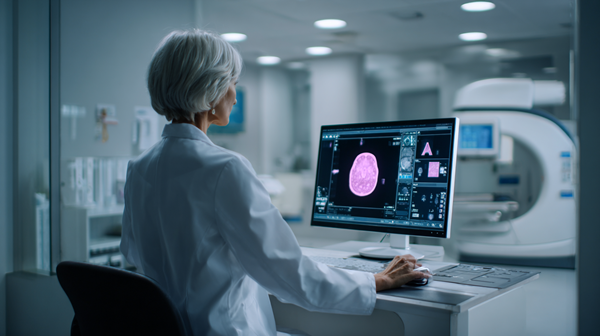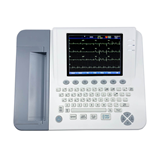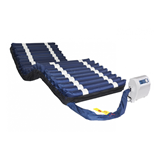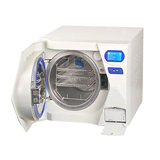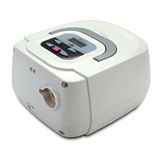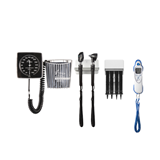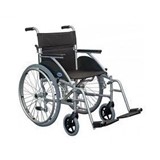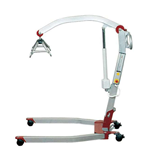Explore the real impact of AI in medical diagnosis across Australia. This guide breaks down where AI works, where it falls short, compliance essentials, and practical ROI insights to help healthcare professionals make informed decisions.
Key takeaways
- AI in diagnostic imaging is delivering results: 94% accuracy in identifying breast cancer through AI-enhanced mammograms, outperforming radiologists in some cases.
- Regulatory oversight is tightening: In Australia, the TGA’s Software as a Medical Device (SaMD) framework now applies to diagnostic AI tools—meaning compliance is non-negotiable.
- Real-world adoption is still slow: Only 16% of Australian healthcare providers currently use AI in clinical diagnostics, largely due to integration, trust, and legal concerns.
- Overhyped? Yes, in some areas: AI is still underperforming in rare disease detection and general practice diagnostics, where lack of data diversity and contextual understanding hinders reliability.
- Financial pressure remains a barrier: Many AI diagnostic tools can cost upwards of $250,000 to implement and train into clinical workflows, with uncertain ROI.
Introduction: Separating reality from marketing spin
AI is everywhere—your inbox, your music recommendations, and increasingly, your doctor’s clinic. But when it comes to diagnostics in Australian healthcare, the hype doesn’t always match the outcomes.
With the Therapeutic Goods Administration (TGA) tightening regulation around Software as a Medical Device (SaMD) and public hospitals stretched for funding, decision-makers need clarity. This article explores what AI is really achieving in diagnostic healthcare in Australia, where it’s falling short, and how your practice or organisation can make informed decisions.
Where AI is working in diagnostics
1. Radiology and medical imaging
AI has proven itself most in radiology—where pattern recognition is king.
- Breast cancer detection: A 2023 study published in The Lancet Oncology found that AI-assisted mammography had a 94.5% accuracy rate—higher than many experienced radiologists.
- CT and MRI analysis: Tools like Aidoc and Zebra Medical Vision are already in use at several Australian private radiology clinics, helping triage cases faster.
- Time efficiency: One study from the Journal of Digital Imaging (2022) showed AI reduced image interpretation times by up to 40% in emergency settings.
2. Dermatology diagnostics
AI is showing promise in analysing skin lesions via smartphone apps and digital dermatoscopy.
- Melanoma detection: The British Journal of Dermatology (2023) reported 87% accuracy in AI detection of malignant melanoma using deep-learning algorithms.
- Remote diagnostics: This is particularly valuable in regional Australia, where access to dermatologists is limited—only 1 dermatologist per 100,000 people in some areas (Skin Health Institute, 2024).
However, clinical validation in diverse skin tones is still a major limitation—an issue noted by the RACGP and CSIRO in recent ethics discussions.
3. Ophthalmology and diabetic retinopathy
AI tools like Google’s DeepMind and Australian platform Eyetelligence are assisting optometrists in detecting:
- Diabetic retinopathy
- Macular degeneration
- Glaucoma risk factors
In 2023, a Melbourne-based trial across three clinics showed AI-assisted retinal scans improved early detection rates by 23%, especially for diabetic patients who hadn't had routine eye checks.
Where AI is falling short
1. General practice and broad-spectrum diagnosis
Despite enthusiasm, AI’s role in GP settings is still largely experimental.
- Symptom checkers: Tools like Ada and Babylon have high variability. A 2024 Monash University review showed diagnostic accuracy ranging between 30% and 60%, making them risky for unsupervised use.
- Lack of nuance: AI struggles with multifactorial conditions like autoimmune diseases, where patient history and subjective symptoms matter as much as hard data.
2. Rare diseases and outliers
AI needs data to learn. For rare conditions with small patient cohorts, it simply doesn’t have enough examples to reliably detect or diagnose.
- A 2023 report by the Garvan Institute noted that AI missed or misclassified 42% of rare genetic conditions in a training dataset from NSW Health.
- There’s also a high risk of false negatives, particularly when training data is heavily skewed toward typical presentations.
Key limitations and risks
1. Regulatory hurdles
The TGA now requires diagnostic AI tools to meet SaMD standards, which includes:
- Evidence of clinical safety and effectiveness
- Transparent algorithm documentation
- Regular auditing and version tracking
This has delayed the rollout of some international tools in Australia due to the need for local validation and data localisation requirements.
2. Medico-legal liability
Who’s responsible if an AI tool gets it wrong? This question is delaying broader adoption in both public and private settings.
- The Medical Indemnity Protection Society (MIPS) warns that until clearer case law emerges in Australia, GPs and specialists remain legally responsible for AI-supported diagnoses—even if the tech fails.
3. Data bias and diversity
AI models trained on U.S. or European data may underperform in Australia due to demographic and genetic differences. Aboriginal and Torres Strait Islander populations are particularly underrepresented in existing datasets.
AI-powered diagnostic equipment: What’s being used and what to look for
AI is increasingly built into the diagnostic equipment used in clinics, hospitals, and remote care settings. Below are key areas where AI integration is delivering practical benefits — and what to consider before investing.
Mammography systems
- AI now supports automated lesion detection, density analysis, and risk scoring directly within digital mammography units.
CT and MRI scanners
- AI is used for image reconstruction, motion correction, and anomaly detection—streamlining workflow and improving consistency.
- These systems can reduce scan interpretation time and help prioritise urgent findings.
Retinal imaging devices
- Retinal cameras now use AI to screen for diabetic retinopathy, macular degeneration, and glaucoma risk.
- Especially valuable in under-served areas, AI helps reduce delays in referrals and improve screening rates.
Digital dermatoscopes and imaging tools
- AI-enabled skin analysis can identify suspicious lesions from images or dermoscopic scans.
- Accuracy is improving, but performance may vary across skin types and rare conditions.
- Tip: Use tools that allow for side-by-side comparison of lesion history and ensure ethical AI use with diverse datasets.
Point-of-care ultrasound (POCUS)
- AI supports probe positioning, boundary detection, and real-time feedback—useful in emergency, rural, and bedside settings.
- Reduces operator error and speeds up clinical decision-making.
Remote patient monitoring (RPM) devices
- AI is used in wearables and home-monitoring tools to detect irregularities, predict deterioration, and support chronic disease management.
- Integration with telehealth improves proactive care and reduces avoidable admissions.
Tips when reviewing AI-enabled equipment
- Ensure tools are TGA-approved and classified as SaMD where required
- Request local clinical validation studies and performance data
- Verify integration with your current EHR, PACS, or prescribing platform
Confirm support for ongoing AI updates and algorithm version control
Cost vs ROI breakdown for AI diagnostic tools
Investing in diagnostic AI isn’t just a tech decision—it’s a financial one. Whether you're managing a radiology group, private clinic, or public health facility, understanding both the true cost of ownership and the potential return on investment is key.
Typical upfront and ongoing costs in Australia
- Software licensing typically ranges from $80,000 to $250,000 per system, depending on features, scope, and whether it’s cloud-based or on-premise.
- Implementation and training costs can add another $20,000 to $75,000, covering staff onboarding, custom integrations, and process redesign.
- Hardware upgrades may be required, especially for older systems, and often cost $10,000 to $50,000, particularly for imaging-heavy environments.
- Annual maintenance and software updates usually come in at 10–15% of the original licence cost, including version upgrades, bug fixes, and technical support.
- Cybersecurity and compliance expenses vary but should not be underestimated—expect at least $5,000+ annually, especially if handling patient data under AI-enhanced workflows.
Potential financial benefits
- Faster scan turnaround is a major win—radiologists using AI often increase output by 30–40%, leading to more daily reads and higher revenue per FTE.
- Fewer diagnostic errors mean reduced readmissions, lower medico-legal exposure, and better long-term patient outcomes.
- Improved triage efficiency allows for smarter prioritisation of critical cases, boosting emergency department throughput and cutting wait times.
Example: Realistic ROI scenario
If your clinic sees 2,000 patients per month, and AI improves imaging throughput by 25%, that’s around 500 additional billable studies monthly. At a modest $80 per study, that equates to $40,000 in additional revenue per month, or $480,000 annually—enough to recover a $300,000 AI investment in under a year. Of course, results vary depending on specialty, volume, and existing systems, but high-throughput environments stand to gain the most.
What your practice or organisation should consider
Before investing in AI diagnostic tools:
- Assess real-world accuracy, not just manufacturer claims. Ask for peer-reviewed, local trials where possible.
- Review TGA approval: Ensure the tool is compliant and registered as a SaMD.
- Check interoperability: Can the AI plug into your existing EHR or imaging systems?
- Train staff: Even the best AI fails without proper use and oversight.
- Plan for post-deployment auditing: AI systems must be retrained and monitored over time, especially as new variants and population trends emerge.
The future: Where to watch next
- Predictive diagnostics: AI that flags patients before symptoms appear, especially in oncology and cardiology.
- Multi-modal diagnostics: Combining imaging, pathology, genomics, and clinical notes into one unified diagnosis engine.
- Federated learning: Allows AI to learn from diverse data sources (like rural and Indigenous populations) without compromising patient privacy.
Conclusion: Proceed with caution, but don’t sit still
AI in diagnostics is already transforming pockets of Australian healthcare—but it’s not a silver bullet. While radiology, dermatology, and ophthalmology are seeing genuine benefits, other areas are still deep in the development stage. The hype is real—but so are the risks.
If you're in charge of diagnostics in your clinic, hospital, or healthtech startup, focus on validated use cases, align with TGA compliance, and invest in human oversight. Because in 2025, the smartest diagnosis still combines AI precision with human judgement.

